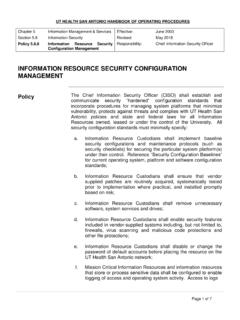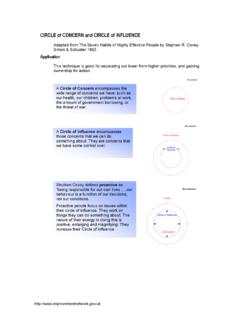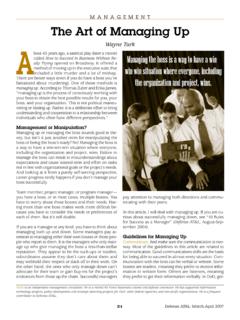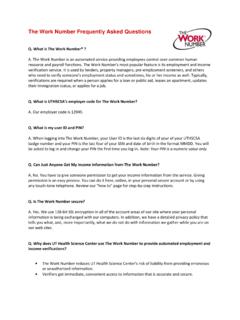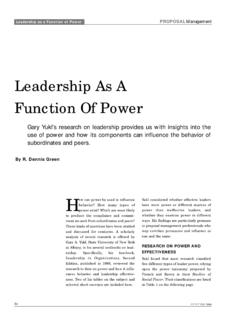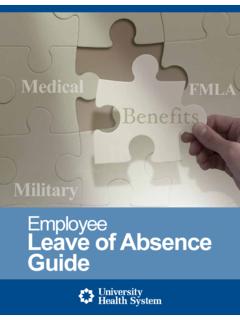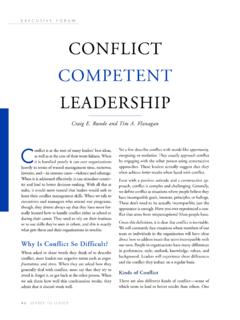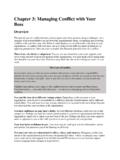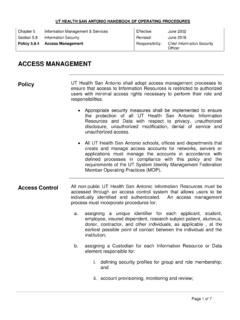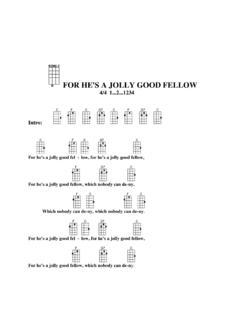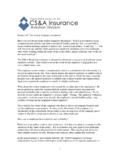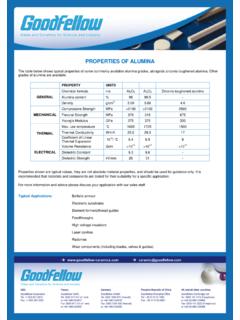Transcription of Reecha Madan Geriatric Fellow PGYIV 06/2012
1 Reecha MadanGeriatric FellowPGYIV06/2012 IMPROVING NURSE TO NURSE COMMUNICATION DURING PATIENT COMMUNICATION DURING PATIENT MEMBERSTEAM MEMBERS Dr. Reecha Madan MD Geriatric Fellow Dr. Reecha Madan MD Geriatric Fellow Dr. Rosina Finley MD, CMDL Fi h MS III Loren Fischer MS III Nursing DON BACKGROUNDBACKGROUND Many healthcare providers have not practiced in the settings to which they are sending patients and are unfamiliar with caredelivery they are sending patients and are unfamiliar with care-delivery details of these settings, and may transfer patients inappropriately.
2 Ineffective transitions lead to poor outcomes such as: inappropriate treatments -inappropriate treatments -delays in diagnosis -severe adverse events -patient complaints -increased costs-increased lengths of stay-medication errors BACKGROUND (CONT )BACKGROUND (CONT.) Monitoring and documenting the mental status of older patients transferred between providers or facilities is important because mental status change can be a sign of acute disease and mental status abnormalities necessitate specific approaches to care when the patient arrives at the facility.
3 Not understanding the patient s ADL limitationswhile starting orders upon admission can lead to poor outcomes Sometimes Foley sget started and never stopped during admission in the hospital. The doctor in the nursing home does not see the patient right away may not know about the foley unless the nurse communicates that. Prolonged unnecessary use of the foley can lead to infection as well as prolong deliriumprolong (CONT.) Boockvar et al (2004) found that a significant percent of ADEs(Adverse Drug Errors) occurred between of ADEs(Adverse Drug Errors) occurred between transfer from the hospital to nursing homewhen a large percent of medications were discontinued or altered.
4 ADE rate of per 100 admissions (estimated that 42-51% are preventable). There have been other programs implemented (INTERACT) dd h bl b(INTERACT) to address these problems, but No one intervention alone can fix this STATEMENTAIM STATEMENT The aim of this project is to implement a Nurse The aim of this project is to implement a Nurse to Nurse communication tool to be used during transfer from hospital to nursing facility and transfer from hospital to nursing facility and have at least 60% increase in the collection of the 5 identified critical 5 identified critical areas.
5 A second aim was to add a medication reconciliation process to the tool to decrease reconciliation process to the tool to decrease ADE i it t t i b This is important to improve because as mentioned above it affects patient PROCESS FLOWCHARTWORK PROCESS FLOWCHARTFISHBONEFISHBONEPRE INTERVENTION DATAPRE INTERVENTION DATA There was no standardized method or tool for taking report There was no standardized method or tool for taking report. Each nurse developed her/his own style. No systematic effort had been made to investigate the consequences of this.
6 However, a small study had been done by chart audit to see if the recognized five i i l b i ddd Th l fid h hi critical areas were being addressed. The results confirmed that this was not occurring . Orientation ADL s Foley Foley Continent Skin Care INTERVENTION: PHASE IINTERVENTION: PHASE IA N N l idd h L T C A two-page Nurse to Nurse tool was introduced to the Long Term Care Facility (LTCF) staff to use during the phone call that is received from the acute care hospital prior to transfer of the patient.
7 The site of the study is a dual certified facility with academic is a dual certified facility with academic presence. A meeting was held to roll out the form and receive feedback from the nursing staff as well as the administrative All the nurses were in-serviced through out all shifts. Morning phone calls were made to remind the nurses to use the form in all the transfers they : PHASE IIINTERVENTION: PHASE II Based on staff feedback, the tool was revised to add more check boxes and make it to fit on to add more check boxes and make it to fit on one page It d idd t i ld ti It was decided to include a section on medication reconciliation on the back side of th the Following implementation of the tool, measures were gp,taken at two time periods to track usage.
8 All transfers done at these two time periods were previewed to see if the tool was completed and if the five critical areas were addressed. Results indicated that the tool was being used and, compared to the study done previously, the five critical areas were being of Times Transfer Tool used over Total number of Wk 1 Oct Wk 2 Oct Wk 3 Oct Wk 4 May Wk 1 May Wk 2 May Wk 3 May Wk 4 Time PeriodMEDICATIONRECONCILIATIONMEDICATION RECONCILIATIONU nfortunately, the medication reconciliation Unfortunately, the medication reconciliation section was not well received by the staff and not October.
9 Only 10 out of 46 forms had the med rec section completedrec section completedIn May, none of the 38 transfers had the med rec ti l t dsection LEARNEDLESSON LEARNED There has to be buy-in: There has to be buyin: the nurses did not buy into the med rec process. the nurses had not been involved in designing the the nurses had not been involved in designing the med rec process and tool the nurses felt that it took too much time the nurses felt that it took too much time. FUTURE DIRECTIONS The hospital-based Acute Care of Elderly Unit (ACE) staff use our tool while giving ACE Unit/LTCF nursing staff use our tool while giving ACE Unit/LTCF nursing report so both ACE unit and LTCF nurses would be using the same tool making things much more efficient.
10 The ACE unit is also changing their discharge form to match the way our medication reconciliation was done to draw attention to the appropriate use of the medication reconciliation section as well as to help medication reconciliation section as well as to help the physicians in medication management. THANK YOU
